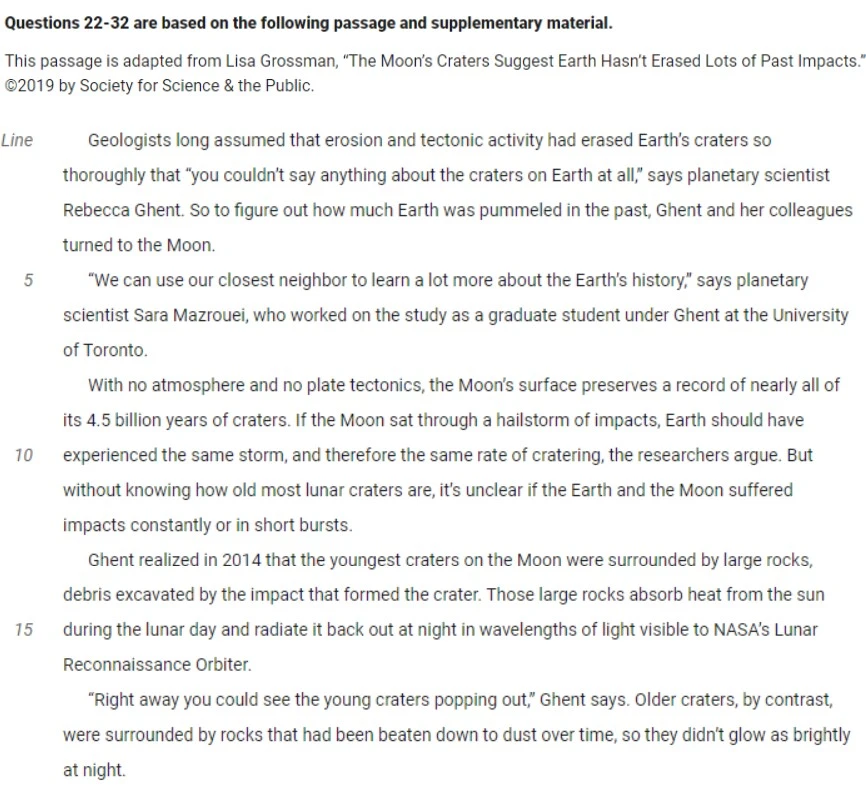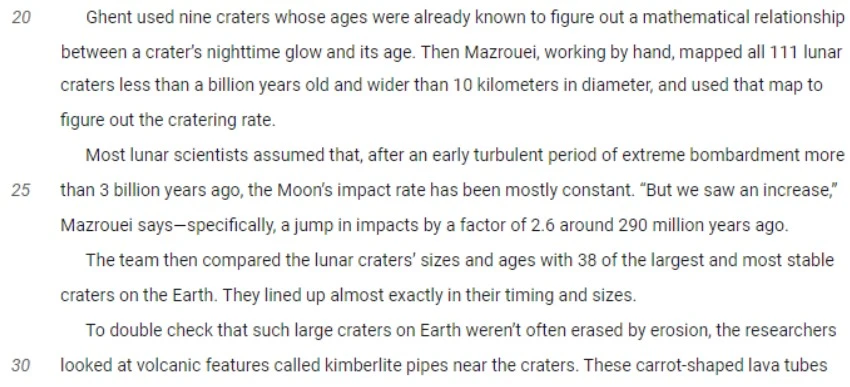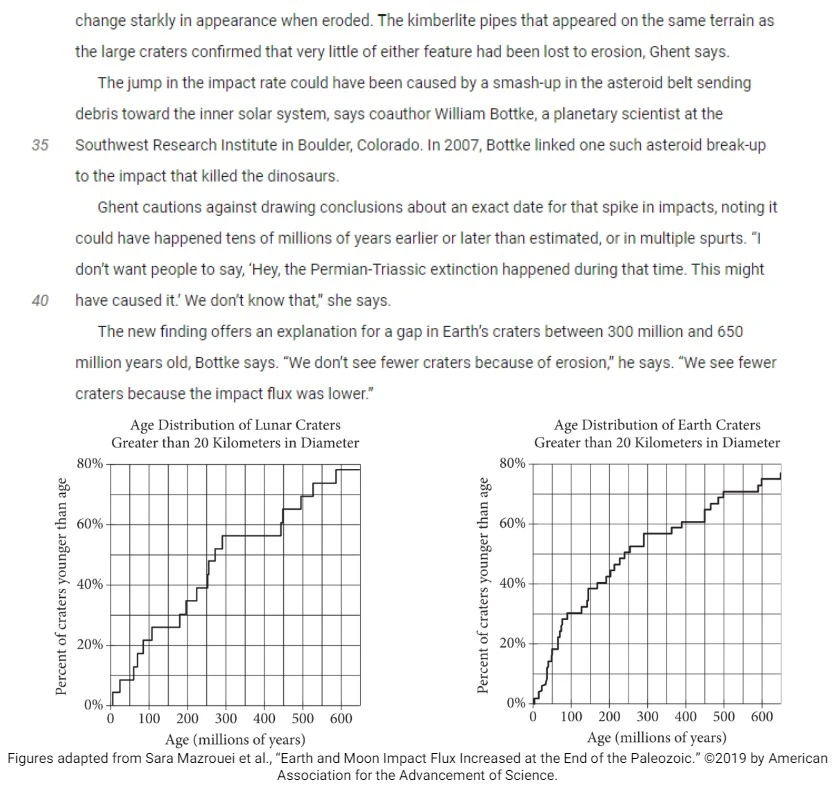Section: Reading and Writing 0 Likes
Geologists long assumed that erosion and tectonic actibity erased (May 2023 U.S.)



Questions from the passage
22) Based on the passage, the team believed that their use of crater data from the Moon to draw conclusions about Earth was justified in part because
A. the rate of cratering on the Moon appears to have changed little over time.
B. similar numbers of craters have been preserved on the Moon and on Earth.
C. the probability of the Moon encountering impactors is approximately the same as that for the Earth.
D. Earth’s atmosphere deflects or destroys a high proportion of potential impactors.
23) Which choice provides the best evidence for the answer to the previous question?
A. line 3-4 (“So to . . . Moon”)
B. line 5-7 (“We can . . . Toronto”)
C. line 8-9 (“With . . . craters”)
D. line 9-10 (“If the . . . argue”)
24) In context, the sentence in line 10-12 (“But without . . . bursts”) mainly serves to
A. identify a problem that the team would need to solve before they could proceed with their study.
B. explain why the team would not be able to draw conclusions about Earth from features on the Moon.
C. summarize the consensus understanding of lunar cratering that the team challenged.
D. acknowledge that existing lunar maps appeared to contradict the team’s hypothesis.
25) As used in line 11, “suffered” most nearly means
A. were disadvantaged by.
B. were subjected to.
C. had resisted.
D. had deteriorated under.
26) As used in line 17, “popping out” most nearly means
A. becoming apparent.
B. expanding upward.
C. exiting forcefully.
D. moving rapidly.
27) Based on the passage, the team trusts the results of the nighttime glow method, in part, because they also believe which of the following is true?
A. Lunar craters less than 10 kilometers in diameter have insufficient debris nearby to reliably determine their ages.
B. An absence of large rocks around a lunar crater can be explained by factors other than the crater’s age.
C. The ages of some lunar craters could be reliably determined before the nighttime glow method was developed.
D. Craters on the Moon that were created early in its history have been almost entirely erased by subsequent bombardments.
28) Which choice provides the best evidence for the answer to the previous question?
A. line 17-19 (“Older . . . night”)
B. line 20-21 (“Ghent . . . age”)
C. line 21-23 (“Then . . . rate”)
D. line 24-25 (“Most . . . constant”)
29) The main purpose of the eleventh paragraph (line 37-40) is to
A. propose a future application of the team’s methods.
B. rebut a possible criticism of the team’s conclusions.
C. explain an apparent anomaly in the team’s data.
D. preclude a potential unwarranted inference from the team’s results.
30) According to figure 1, among the youngest 50% of lunar craters greater than 20 kilometers in diameter, the oldest that a crater could be is between
A. 200 and 300 million years old.
B. 300 and 400 million years old.
C. 400 and 500 million years old.
D. 500 and 600 million years old.
31) According to figure 2, among Earth’s craters greater than 20 kilometers in diameter, the percentage that are younger than 550 million years old is closest to
A. 80%.
B. 70%.
C. 60%.
D. 50%.
32) Taken together, the figures best support which statement about craters greater than 20 kilometers in diameter on the Earth and the Moon?
A. The number of such craters is greater on the Earth than it is on the Moon.
B. The percentage of such craters under 100 million years old is greater on the Moon than on the Earth.
C. The Earth experienced a longer period with no change in the percentage of such craters than the Moon did.
D. The percentage of such craters that are younger than 250 million years old is greater on the Earth than on the Moon.
Solution
Correct answer:
22 - C
23 - D
24 - A
25 - B
26 - A
27 - C
28 - B
29 - D
30 - A
31 - B
32 - D
Exam Edition: May 2023 U.S.
Exam Year: 2023
Related topics: Text understanding, Graph Analysis